The Moto G (2015) Review
by Brandon Chester on August 19, 2015 8:00 AM EST- Posted in
- Smartphones
- Mobile
GPU Performance
While CPU performance has improved significantly in low-end and mid-range smartphones, the same can't be said of GPU performance. Adreno 306 is really just a variant of Adreno 305, which we have covered time and time again in reviews of Snapdragon 400 devices. I already discussed in my Moto E review that I'm not happy with the graphics performance in Snapdragon 410 and with the GPU configuration in the Moto G being exactly the same there won't be any significant changes to graphics performance.
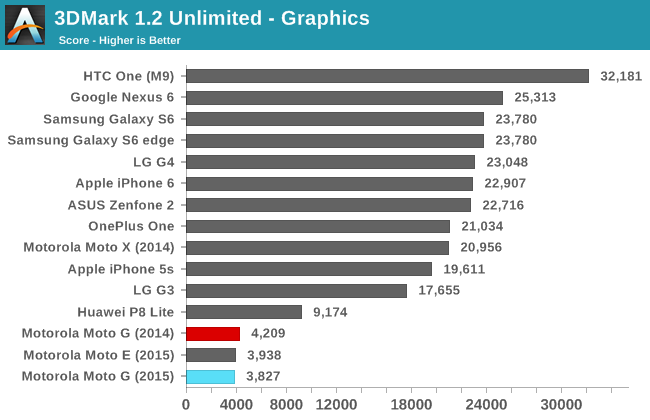
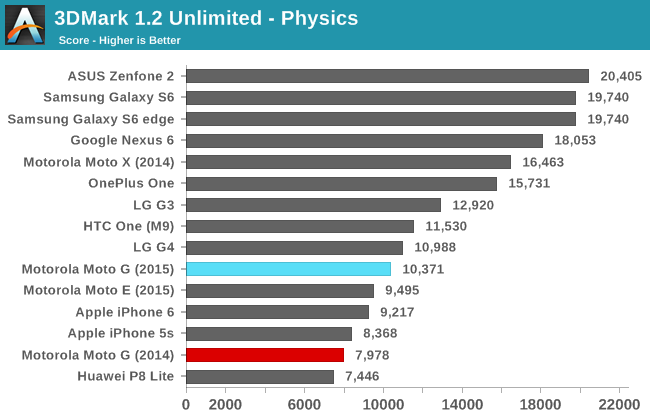
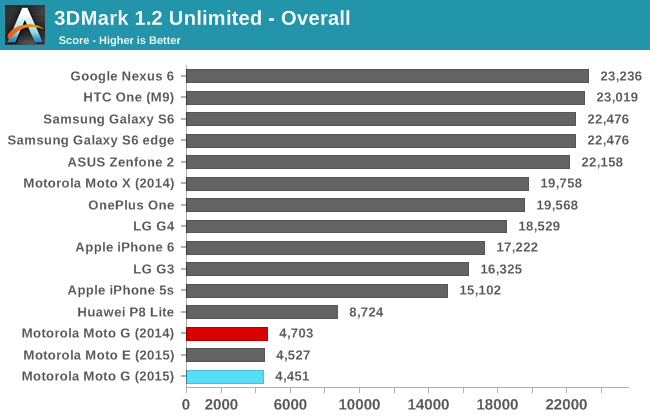
Due to the way 3DMark calculates its overall score, it's not possible for a device to pull ahead based on the score of one test being substantially higher than the other. Because of this, the Moto G's improvement in the physics test doesn't lead to it coming on top overall due to its slightly lower graphics score. I would just attribute the lower graphics test score to testing variance, and so in reality the Moto G will be slightly faster than the Moto E or older Moto G in any physics heavy games.
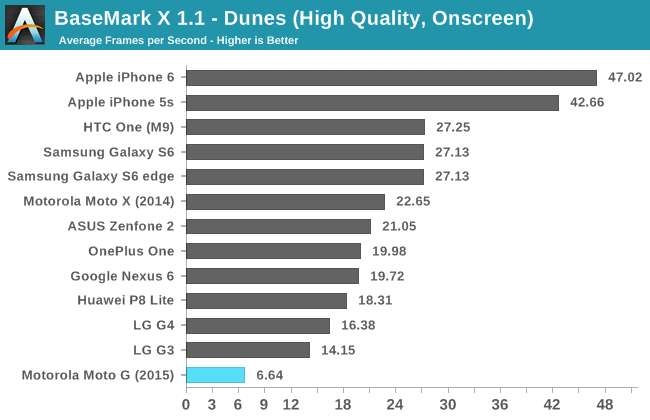
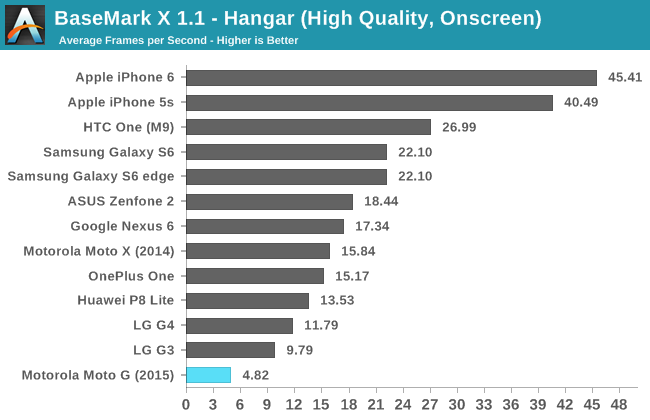
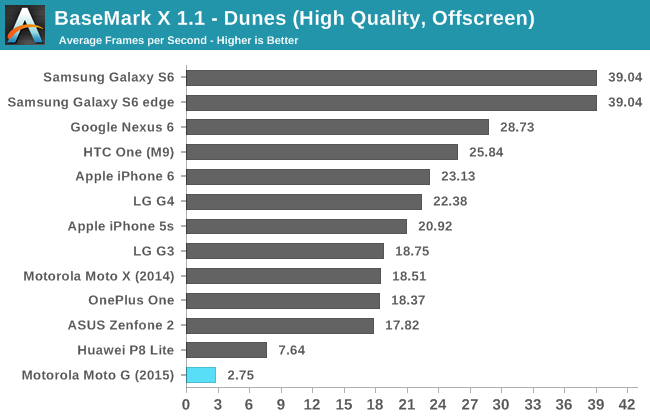
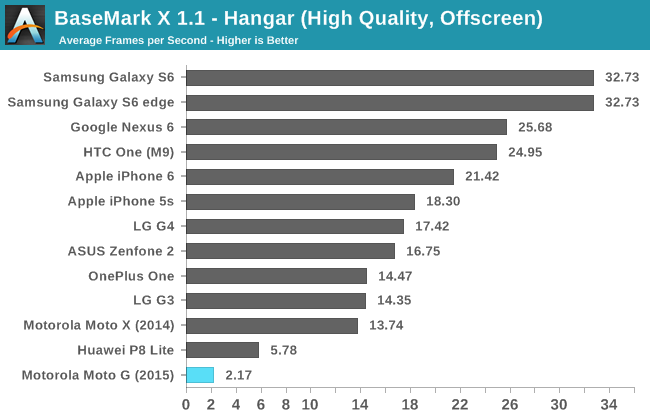

Driver bugs had previously prevented me from running BaseMark X on Snapdragon 410 devices. This appears to have been resolved, as the test runs and completes on the Moto G. There's not much to be said about the scores, which are at the bottom of the charts in every single test.
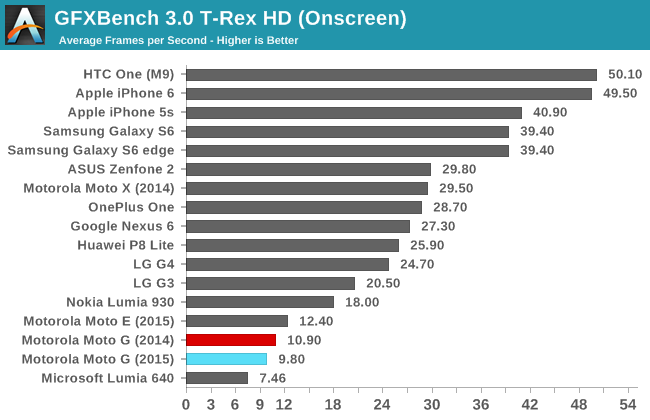
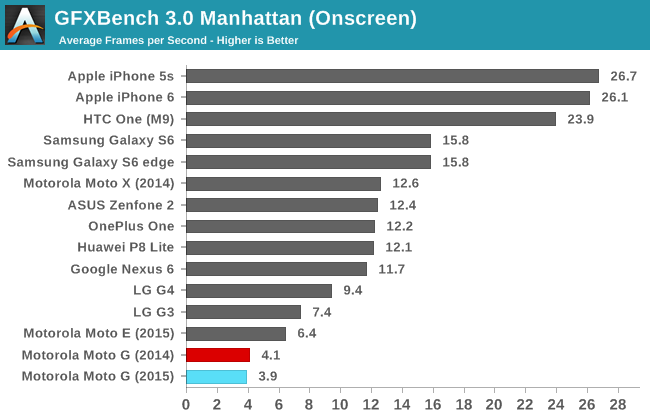
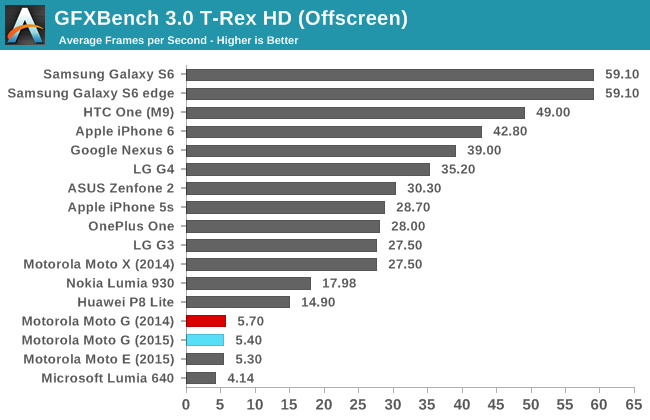
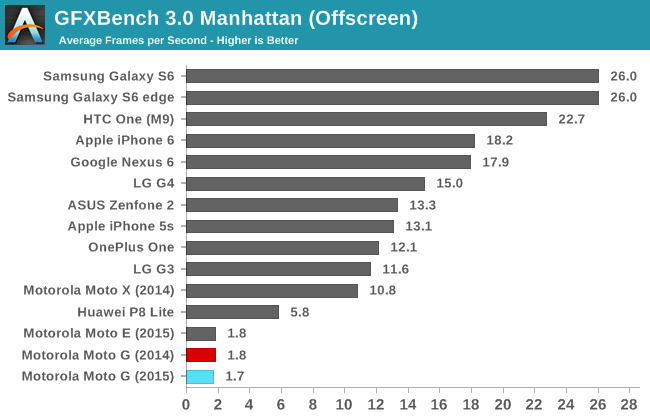
As expected, performance in GFXBench on the new Moto G is essentially identical to that of other Adreno 305/306 devices. Unfortunately they all share a space at the very bottom of each chart, and end up being between 1/3 and 1/2 the speed of the Adreno 405 GPU in Snapdragon 615.
When I reviewed the Moto E I gave the GPU performance a pass because the phone sold for $100-130. With the Moto G priced as high as $219 for the high end model, I have to say that $30 more gets you the Huawei P8 Lite which uses Snapdragon 615 and Adreno 405 which is substantially faster. There's not much Motorola could do about this apart from using a completely different SoC, but obviously that wasn't a possibility when building a device that does start at $179 even if it scales up to $219. I just hope that we see some improvement in GPU performance on devices at this price point in the near future.
NAND Performance
Flash memory performance can often be an invisible performance bottleneck when applications are running in the background, writing files, or performing updates. Low-end and mid-range devices often suffer from very poor NAND performance which can cause stuttering or slowness whenever there's heavy I/O activity occurring.
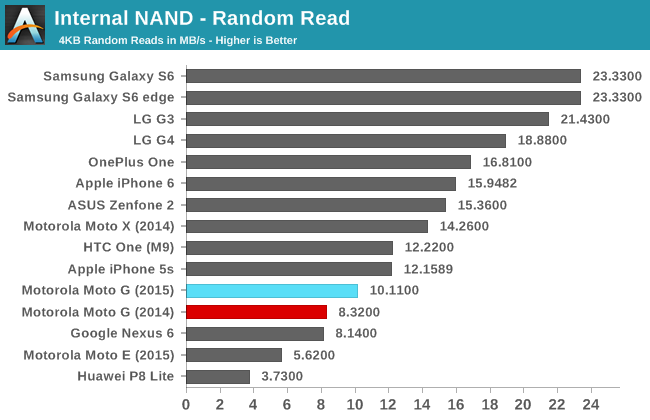

Random read speeds on the Moto G are much faster than the Moto E or the Huawei P8 Lite. They're certainly not the fastest on record, but they're at the point where I wouldn't worry about them causing performance problems in most circumstances. The random write speed is a very curious case, with it being faster than every other device on record. There doesn't appear to be any problem with the testing, and it seems that the Moto G's NAND simply has relatively fast random write speeds.
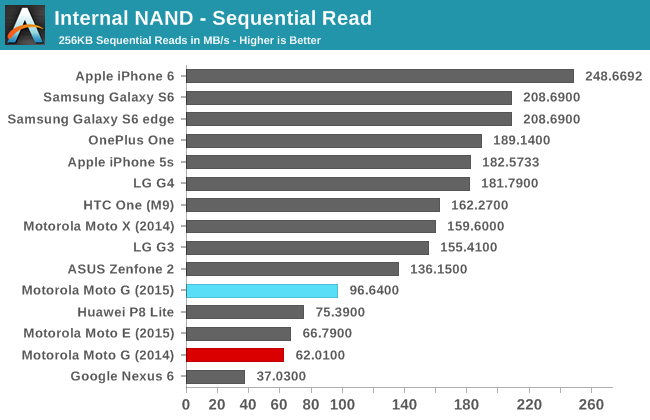
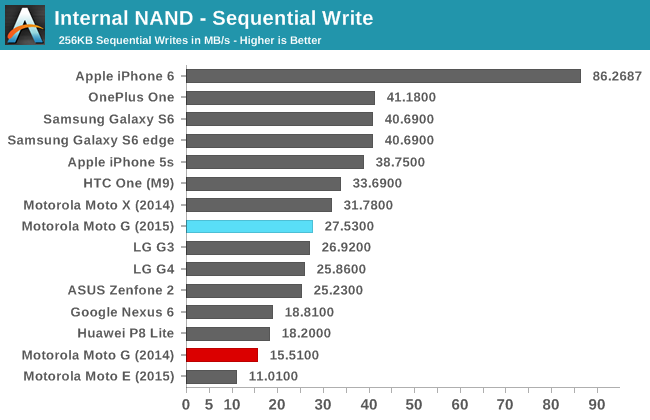
Sequential read speeds on the Moto G are faster than other mid range phones, but not as fast as the Zenfone 2 or flagship Android devices. Sequential writes sit right in the middle of the chart and are around the same speed as the NAND in LG's flagship devices. Whether it's random or sequential access I don't expect users will encounter any performance issues on the Moto G caused by poor NAND performance.










90 Comments
View All Comments
shadarlo - Monday, August 24, 2015 - link
While the G2 is a great phone that I've had since nearly the launch, I am VERY ready for a new phone. I just don't see too many in this generation worth buying.For $175 or so that the G2 can be had for on sales it definitely blows away the current mid-tier phones.
phoenix_rizzen - Tuesday, August 25, 2015 - link
Except that managing iOS devices is a royal pain in the arse that requires bucketloads of money spent on software, hardware, and tech time. When a school district *needs* a full-time person (usually 2-3 if you want any kind of fast turn-around) doing nothing but managing iOS hardware and software, there's something wrong with the management tools. Apple Configurator is a joke. The MDM tools from various sources aren't much better. Any way you cut it, iOS device management is a time consuming money pit.Android management isn't much better, and the tools are very basic, but they are improving. The biggest problem is that what works for OEM X doesn't always work for OEM Y, and what works for Device A from OEM X doesn't always work for Device B from the same OEM. :( If you standardise on a single device from a single OEM, things aren't too bad.
Have no experience with BB10 or WinPhone management.
ChromeOS is really the only one that is easy to manage, even using the free tools from Google. As much as I dislike Chromebooks in general, the management tools are light-years ahead of anything available for the other mobile devices. (Unless you can afford 6-digit yearly licensing fees, in which case there's MDM software that comes close.)
Even with the horrible management tools, dealing with Android devices is still much better than dealing with iOS devices. We tolerate them on our networks; but we do everything we can to discourage people from buying them.
RaLX - Wednesday, August 19, 2015 - link
BTW, I would wait for the Nexus 5 before making any decision.mmrezaie - Wednesday, August 19, 2015 - link
Google usually messes the battery life so much. I bought the new moto e for the sole purpose of battery life, but it has some issues of its own.Pissedoffyouth - Wednesday, August 19, 2015 - link
No, installing crap like Greenify and things makes people whinge about battery life. Everyone who complains always runs these "battery saving 5000" apps and wonder why their phones are crap?Solandri - Wednesday, August 19, 2015 - link
The battery in my 2013 Nexus 5 began dying prematurely. It'd start off the day at 100%, get to 50% by around 3pm, then it'd go from 50% to dead in the next hour. Google eventually replaced it with a new phone under warranty. But as part of the troubleshooting process, they asked me to do a rundown test with the phone in safe mode. Safe mode disables all apps and services which weren't installed on the phone by default. All the default functions (phone, camera, etc) still work.The damn thing lasted just shy of 3 days even with a bad battery. It's made me seriously reconsider what apps I install on my phone.
eek2121 - Thursday, August 20, 2015 - link
Get an HTC One M8. Install CM12.1 on it. Even on stock I was getting 24 hours on a charge, and i'm a heavy user, browsing the internet for hours every day. Love this phone.Devo2007 - Sunday, August 23, 2015 - link
I've always wondered what effect Greenify, Amplify, etc really have on battery life. Sure, sometimes random wakelocks can impact battery life, but unless someone is specifically seeing something draining the battery if makes me wonder if these apps do more harm than good.Devo2007 - Sunday, August 23, 2015 - link
... Of course, the moment I express concerns like this, I usually tend to get shot down pretty quickly as someone who has no idea what I'm talking aboutmmrezaie - Wednesday, August 19, 2015 - link
I meant for Nexus phones.